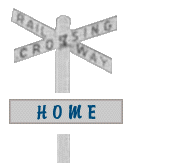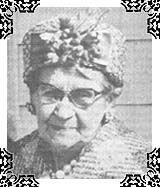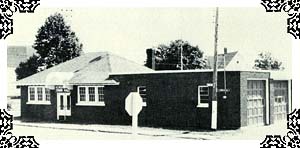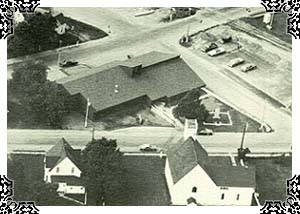








After Kensington was incorporated in 1914, it was decided that the new town needed a town hall, a building to house local groups and direct municipal business. Completed in 1916, the two-storey wood building immediately became the centre of community development.
 In
1916, it played host to Kensington's first town council
meetings, chaired by the first mayor, Dr. Donald Darrach.
Besides these town meetings, where the plans for the
growing village were laid out, other organizations soon
began using the building as their base of operations.
During the war
years, the local branch of the Red
Cross met in the upper level of the hall. One of their
activities was the making of blankets and clothing to be
sent to servicemen overseas, as a constant reminder of
support from the home front. A popular joke which made
the rounds during the war had to do with a woman who got
a letter from the recipient of her handiwork-- a
correspondence made possible by the fact that most women
attached their addresses. The soldier's note read as
follows: "Got your socks, lady-- some fit,/ Used one
for a hammock, and one for a mitt." While some of
the women may not have been expert knitters, their
volunteer efforts did much to warm the hearts of soldiers
abroad.
In
1916, it played host to Kensington's first town council
meetings, chaired by the first mayor, Dr. Donald Darrach.
Besides these town meetings, where the plans for the
growing village were laid out, other organizations soon
began using the building as their base of operations.
During the war
years, the local branch of the Red
Cross met in the upper level of the hall. One of their
activities was the making of blankets and clothing to be
sent to servicemen overseas, as a constant reminder of
support from the home front. A popular joke which made
the rounds during the war had to do with a woman who got
a letter from the recipient of her handiwork-- a
correspondence made possible by the fact that most women
attached their addresses. The soldier's note read as
follows: "Got your socks, lady-- some fit,/ Used one
for a hammock, and one for a mitt." While some of
the women may not have been expert knitters, their
volunteer efforts did much to warm the hearts of soldiers
abroad.
The Boy Scouts and Girl Guides also met on the upper floor of town hall, as did the Oddfellows and the Rebeccas, orders whose membership were made up of local tradesmen and their wives. Not everyone who spent time in the town hall building, however, was there of their own volition. There was a jail cell located at the back of the hall on the basement level, where disturbers of the peace were temporarily held until their heels had cooled somewhat.
The basement of town hall was not only a place for correcting attitudes, but also for expanding minds. The lower hall housed the Carnegie Library, which opened in Kensington in 1934. After making his fortune in steel, the American industrialist Andrew Carnegie declared in 1868 that he would "spend the surplus each year for benevolent purposes," and during the rest of his life, gave more than $350 million to educational and cultural institutions. Part of this endowment went towards funding nearly 1700 libraries in the United States, Canada, and Great Britain.
 In the 1930s, the Carnegie
Corporation gave over $130,000 to Prince Edward Island to
improve its libraries, and Kensington benefitted greatly
from his philanthropy. In 1934, the director of the
Carnegie library, Nora Benton, and the Kensington-born
premier of the Island, Dr. W.J.P. MacMillan, travelled to
Kensington where plans were finalized for the new
library. After only a few weeks, the library was opened
in the lower level of the town hall, and Mrs. F. C.
Townsend (at left) became its first librarian, serving in
this capacity until 1962. By 1957, space became limited,
and the library was moved to the federal building. While
the first library was started with the fortune of a
railway builder, the current Kensington Public Library is
now-- appropriately enough-- situated in the old CN railway
station, and is affiliated with the
provincial library system.
In the 1930s, the Carnegie
Corporation gave over $130,000 to Prince Edward Island to
improve its libraries, and Kensington benefitted greatly
from his philanthropy. In 1934, the director of the
Carnegie library, Nora Benton, and the Kensington-born
premier of the Island, Dr. W.J.P. MacMillan, travelled to
Kensington where plans were finalized for the new
library. After only a few weeks, the library was opened
in the lower level of the town hall, and Mrs. F. C.
Townsend (at left) became its first librarian, serving in
this capacity until 1962. By 1957, space became limited,
and the library was moved to the federal building. While
the first library was started with the fortune of a
railway builder, the current Kensington Public Library is
now-- appropriately enough-- situated in the old CN railway
station, and is affiliated with the
provincial library system.
 In 1950, the town
building was moved from its original location.
Immediately prior to this move, the building was just
about lifted from its foundations unintentionally. A
local motorist lost control of his vehicle, veered off
the road, and crashed into the side of the civic
building. Perhaps town officials saw this as a sign that
it was time to consider another location, taking the hall
out of the flight path of any other careening vehicles.
The original building continued in use until 1957, when
the town administration relocated into the old post office
building.
In 1950, the town
building was moved from its original location.
Immediately prior to this move, the building was just
about lifted from its foundations unintentionally. A
local motorist lost control of his vehicle, veered off
the road, and crashed into the side of the civic
building. Perhaps town officials saw this as a sign that
it was time to consider another location, taking the hall
out of the flight path of any other careening vehicles.
The original building continued in use until 1957, when
the town administration relocated into the old post office
building.
 Town business was
transacted in the 1916 building until the construction of
the new Kensington Community Center in 1977, which was--
interestingly enough-- built in the exact location of the
original town hall. As well as occupying its spot on the
town landscape, the community centre has taken over, and
even expanded upon, its traditional services. Its medical
offices have housed many of Kensington's doctors and
dentists, and the police and fire stations
are also located on the premises. Like its predecessor,
the community centre promises to remain the point around
which Kensington revolves for many years. And, hopefully,
the town's civic building has experienced its last car
accident.
Town business was
transacted in the 1916 building until the construction of
the new Kensington Community Center in 1977, which was--
interestingly enough-- built in the exact location of the
original town hall. As well as occupying its spot on the
town landscape, the community centre has taken over, and
even expanded upon, its traditional services. Its medical
offices have housed many of Kensington's doctors and
dentists, and the police and fire stations
are also located on the premises. Like its predecessor,
the community centre promises to remain the point around
which Kensington revolves for many years. And, hopefully,
the town's civic building has experienced its last car
accident.
